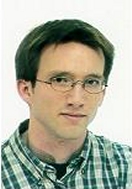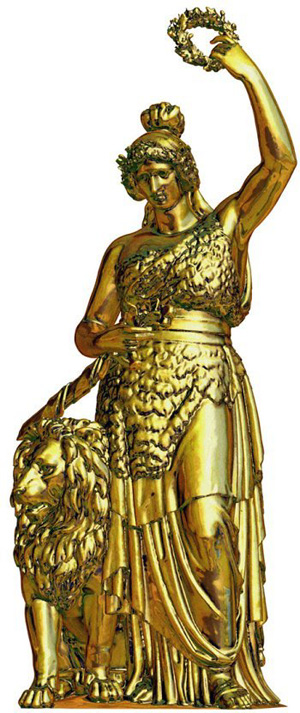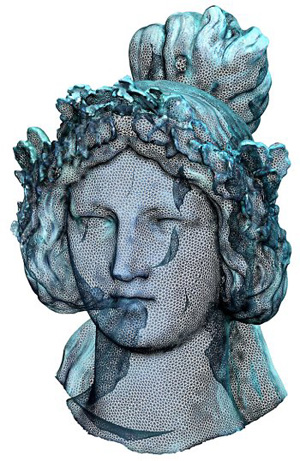Now, a more elegant approach involving 3D scanning and new software that creates a detailed reproduction of even the largest monument could provide a much efficient method of keeping watch. The technique promises to provide conservation scientists with valuable data on rate of decay and perhaps offer new ideas for protecting stone and bronze works of art.
Bavaria is an 18-metre high bronze statue who looks down on the site of Munich’s famous Oktoberfest. She was inaugurated in 1850, and purportedly 31 people crammed inside her head. Bavaria has now been captured using 3D laser scanners and is being digitally reconstructed by two companies, ObjectScan and ArcTron, information scientist Konrad Klein of the Fraunhofer Institute for Computer Graphics IGD in Darmstadt told us, they used our software, QTSculptor, which is commercially available through our spin-off company Polygon Technology GmbH.

Konrad Klein
The program merges individual scanned images within a common coordinate system, allowing even the biggest monuments to be surveyed in much finer detail than ever before. Unlike other systems, our software can easily merge a large number of individual scans, explains Klein. The program uses overlapping surfaces to refine the 3D model at these points. Redundantly measured areas are merged, explains Klein, and contradictory data or data of comparatively low quality are removed from the dataset. The system then converts the entire pixel dataset into a mesh of triangles representing the shape. It can be done on a PC, he told us. QTSculptor is available for Windows, Linux and Solaris, and on request for most other Unix operating systems.
To replicate the characteristics of the monuments’ surface a textured skin is then stretched over the virtual statue. Photographs showing the texture can be taken separately from the scanning process. We are working towards full automation of the process, for smaller objects, including planning of the capture positions, adds Klein, In this way, we shift part of the necessary expertise on to the software, so that even inexperienced users are able to reconstruct complicated objects.

When Bavaria was inaugurated in 1850, 31 people alone crammed into her head. Today, even objects as large as these can be three-dimensionally reconstructed from digital scans. (Credit: © Jotero)
The appliance of science to public statuary has enthused Hermann Neumann, the building inspector responsible for the Bavaria statue project. Previously, documenting such a large object quickly generated stacks of files with innumerable drawings and photographs, he says. Using digital technology, restorers can easily create 3D models such as a damaged or completely shattered hand.

Bavaria (Credit: © ObjektScan)
The QTSculptor software could also find technological applications, allowing designers to digitize and prototype moulds and models rapidly.
Further reading
Konrad Klein
http://www.igd.fraunhofer.de/igd-a7/persons/kklein/
The 3D modelling software
http://www.polygon-technology.com/Products/Applications/forms.html
ArcTron
http://www.arctron.com/
Jotero agency
http://www.jotero.com/